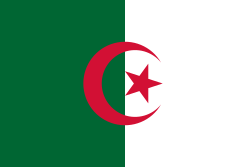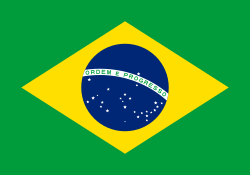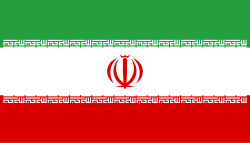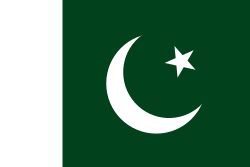Satellittelefon
| Den här artikeln behöver fler eller bättre källhänvisningar för att kunna verifieras. (2015-05) Åtgärda genom att lägga till pålitliga källor (gärna som fotnoter). Uppgifter utan källhänvisning kan ifrågasättas och tas bort utan att det behöver diskuteras på diskussionssidan. |

En satellittelefon är en portabel telefon som kommunicerar direkt med kommunikationssatelliter i bana runt jorden. Beroende på vilket system som används, kan en satellittelefon ha täckning i allt från en begränsad region till globalt över hela världen.
En modern satellittelefon är ungefär lika stor som en större mobiltelefon. Tidigare modeller var betydligt otympligare och hade ofta även en stor teleskopisk antenn. I dag har telefonerna blivit betydligt mindre. Satellittelefoner används flitigt av människor som vistas på avlägsna platser eller på platser som av andra skäl saknar pålitliga kommunikationssystem. Exempel på användare av satellittelefoner är journalister, äventyrare och forskare.
Satellittelefoner finns också ofta ombord på fartyg och ibland på flygplan. På fartyg och på andra platser där stora installationer inte är ett problem, omfattar satellittelefonen ofta ytterligare utrustning som kan optimera täckning och kvalitet, såsom styrbara antenner.
I Sverige kopplades det första satellitsamtalet upp den 28 juni 1965, då via kommunikationssatelliten Early Bird. Samtalet gick mellan telestyrelsens sessionssal i Stockholm och den svenska ambassaden i Washington, D.C.. En av de saker man var tveksam till, var det faktum att det blev en fördröjning på ungefär en halv sekund mellan fråga och svar. Förklaringen låg i att det tog en fjärdedels sekund för radiovågorna att först gå från Stockholm till Comwell i England med kabel, därefter upp till Early Bird som befann sig 36 000 kilometer ovanför Atlanten och så ner till den amerikanska mottagarstationen.[1]
Olika teknologier och system
Geostationära system
Vissa satellittelefonsystem använder sig av satelliter i geostationär bana. Dessa system kan uppnå en nästan global täckning med blott tre eller fyra satelliter, vilket reducerar kostnaden för systemet eftersom satelliter och uppskjutning av satelliter är mycket kostsamt. Inmarsat använder sig av geostationära satelliter.
En nackdel med geostationära satellitelefonsystem var tidigare att de av fysikaliska skäl krävde relativt stora antenner i jämförelse med vanliga mobiltelefoner. Detta har dock ändrats radikalt den senaste tiden och i dag använder exempelvis system såsom Thuraya små telefoner från Hughes och Motorola som inte skiljer sig mycket från vanliga mobiltelefoner i storlek.
Satelliter i låg bana
En annan typ av satellittelefonisystem, LEO, använder sig av satelliter i låg bana. Ett fullt utbyggt sådant system har möjlighet att ge global täckning utan glapp, och kräver inte lika stor telefonutrustning som system av geostationär typ, vilket innebär att de flesta genuint portabla satellittelefoner är av LEO-typ. LEO satelliter ligger i en bana runt jorden på relativt låg höjd och med hög hastighet. LEO-satelliter ligger vanligen 640 till 1220 kilometer över jordytan, och har en omloppstid på 70 till 90 minuter.
För närvarande finns två satellittelefonsystem av LEO-typ, Iridium och Globalstar. Båda systemen har konkurser bakom sig på grund av höga uppstartskostnader som inte kunde täckas av tillräckliga abonnemangsintäkter, men drivs nu av nya ägare som fick köpa systemen för en bråkdel av den summa de initialt kostade.
Källor
- ^ Panorama 65 - en bokfilm från Bonniers Folkbibliotek, red. Per-Erik Lindorm, Albert Bonniers förlag, Stockholm 1965 s. 158
Externa länkar
- Information om såväl realiserade som misslyckade telefonisystem.
- En inledning till satellittelefonsystem
- Om satellittelefoner
- Iridiums webbplats
- Globalstars webbplats
- Inmarsats webbplats
Media som används på denna webbplats
Författare/Upphovsman: Tkgd2007, Licens: CC BY-SA 3.0
A new incarnation of Image:Question_book-3.svg, which was uploaded by user AzaToth. This file is available on the English version of Wikipedia under the filename en:Image:Question book-new.svg
The Flag of Europe is the flag and emblem of the European Union (EU) and Council of Europe (CoE). It consists of a circle of 12 golden (yellow) stars on a blue background. It was created in 1955 by the CoE and adopted by the EU, then the European Communities, in the 1980s.
The CoE and EU are distinct in membership and nature. The CoE is a 47-member international organisation dealing with human rights and rule of law, while the EU is a quasi-federal union of 27 states focused on economic integration and political cooperation. Today, the flag is mostly associated with the latter.
It was the intention of the CoE that the flag should come to represent Europe as a whole, and since its adoption the membership of the CoE covers nearly the entire continent. This is why the EU adopted the same flag. The flag has been used to represent Europe in sporting events and as a pro-democracy banner outside the Union.bendera Indonesia
Flag of Iran. The tricolor flag was introduced in 1906, but after the Islamic Revolution of 1979 the Arabic words 'Allahu akbar' ('God is great'), written in the Kufic script of the Qur'an and repeated 22 times, were added to the red and green strips where they border the white central strip and in the middle is the emblem of Iran (which is a stylized Persian alphabet of the Arabic word Allah ("God")).
The official ISIRI standard (translation at FotW) gives two slightly different methods of construction for the flag: a compass-and-straightedge construction used for File:Flag of Iran (official).svg, and a "simplified" construction sheet with rational numbers used for this file.
Flag of Israel. Shows a Magen David (“Shield of David”) between two stripes. The Shield of David is a traditional Jewish symbol. The stripes symbolize a Jewish prayer shawl (tallit).
MAVEN at Mars, Artist's Concept. This artist's concept depicts NASA's Mars Atmosphere and Volatile EvolutioN (MAVEN) spacecraft near Mars. MAVEN is in development for launch in 2013 and will be the first mission devoted to understanding the Martian upper atmosphere. The mission's principal investigator is Bruce Jakosky from the Laboratory for Atmospheric and Space Physics at the University of Colorado.
The goal of MAVEN is to determine the role that loss of atmospheric gas to space played in changing the Martian climate through time. MAVEN will determine how much of the Martian atmosphere has been lost over time by measuring the current rate of escape to space and gathering enough information about the relevant processes to allow extrapolation backward in time.
NASA Goddard Space Flight Center in Greenbelt, Md. manages the project and will also build some of the instruments for the mission. In addition to the principal investigator coming from CU-LASP, the university will provide science operations, build instruments, and lead education/public outreach. Lockheed Martin of Littleton, Colo., is building the spacecraft and will perform mission operations. The University of California-Berkeley Space Sciences Laboratory is also building instruments for the mission. NASA's Jet Propulsion Laboratory, Pasadena, Calif., will provide navigation support, the Deep Space Network, and the Electra telecommunications relay hardware and operations.
For more information about MAVEN, visit www.nasa.gov/maven.Inmarsat satellite telephone in use, Nias, Indonesia (April 4, 2005) — Information System Technician 1st Class Josh Davis performs a communications check with an Inmarsat satellite telephone system to establish communications with the Military Sealift Command (MSC) hospital ship USNS Mercy (T-AH 19) and the advance team upon arrival in Nias, Indonesia. At the request of the government of Indonesia, the Military Sealift Command (MSC) hospital ship USNS Mercy (T-AH 19) and the MSC combat stores ship USNS Niagara Falls (T-AFS 3) are on station off the coast of Nias, providing assistance as determined appropriate and necessary with earthquake disaster relief efforts and provide medical assistance to those in need.
U.S. Navy photo by Photographer's Mate 2nd Class Jeffrey Russell (RELEASED)


























